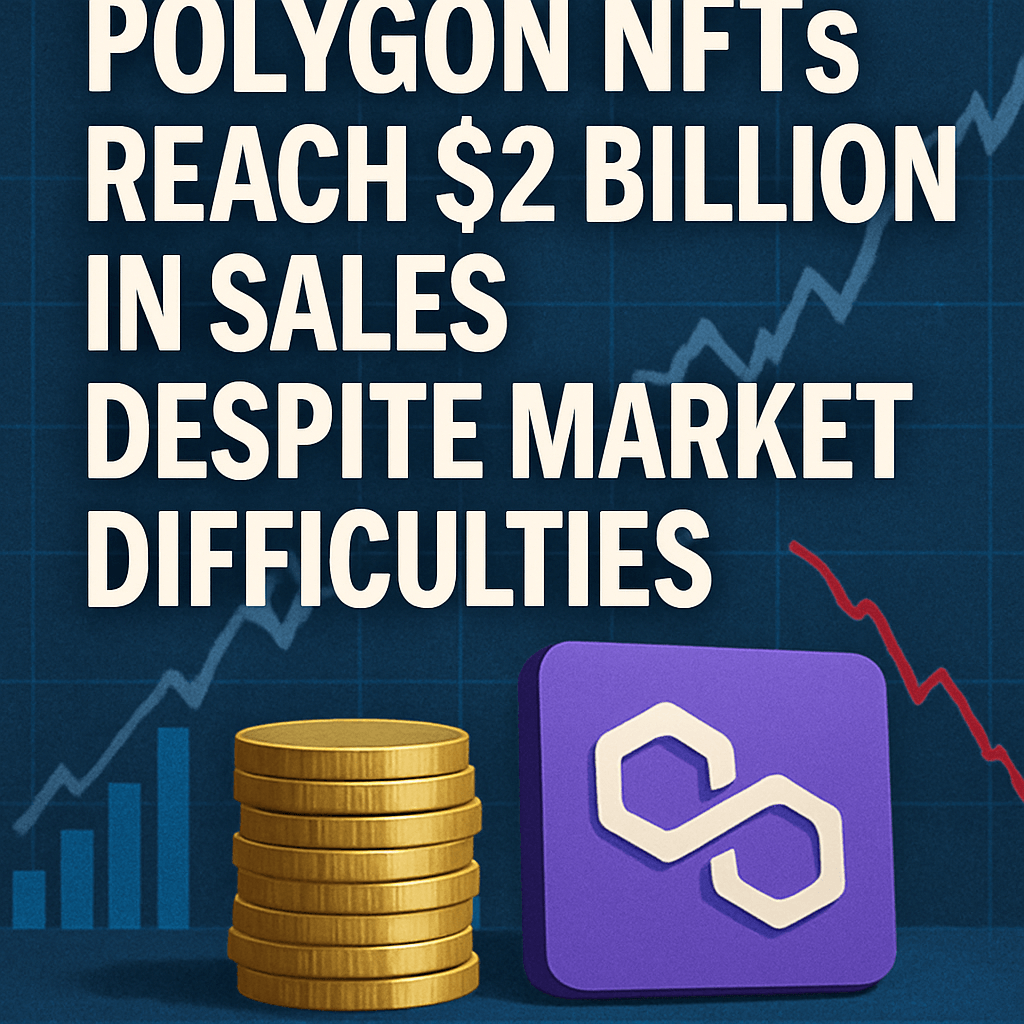Polygon NFTs Reach $2 Billion in Sales Despite Market Difficulties


In a significant achievement for the Polygon network, non-fungible token (NFT) sales have surpassed the $2 billion mark, positioning it as a formidable player in the digital asset landscape. This milestone comes during a period characterized by overall market volatility, where many blockchain platforms have experienced downturns in activity and value. Notably, Polygon’s NFT growth trajectory appears to be driven in large part by its innovative real-world asset marketplace, Courtyard, which now stands as a robust competitor to established entities like DraftKings in terms of cumulative sales.
Key Drivers Behind Polygon’s NFT Success
Polygon’s impressive NFT sales figures can be attributed to several key factors:
- Low Transaction Costs: Compared to Ethereum, Polygon offers substantially lower transaction fees, making it an attractive option for NFT creators and buyers alike. The average transaction fee on Polygon typically ranges from $0.01 to $0.10, as opposed to Ethereum’s current average fees which can exceed $5, particularly during periods of high network usage.
- Fast Transactions: The Polygon network is designed to process thousands of transactions per second (TPS), a crucial attribute for maintaining user engagement and a seamless trading experience for NFT collectors and investors.
- Robust Infrastructure: Polygon’s commitment to developing user-friendly tools and features, such as customizable minting options and efficient marketplaces, have significantly enhanced its usability for both new and experienced users in the NFT space.
Courtyard Marketplace: A New Challenger
Courtyard’s rise as a marketplace reflects a broader trend toward integrating real-world assets within the NFT space. Courtyard allows users to tokenize physical assets, thereby bridging the gap between traditional markets and digital assets. By creating a platform that allows for fractional ownership of these assets, Courtyard democratizes access and opens up new revenue streams for artists and asset owners alike.
As of 2025, Courtyard has become a key player that rivals long-standing marketplaces like DraftKings in all-time NFT sales. This is indicative not only of the growing popularity of Polygon’s network but also the increasing acceptance of NFTs as a legitimate asset class. Industry experts predict that this could lead to rapid expansion throughout 2026, as additional marketplaces explore similar strategies to attract users.
Market Implications and Future Outlook
The surge in Polygon’s NFT sales amidst market uncertainty presents several implications for investors and creators considering this space:
- Decentralization Benefits: As the NFT market continues to evolve, the emphasis on decentralized platforms may encourage more creators to mint their art on networks that offer security and efficiency, such as Polygon.
- Increased Institutional Interest: The performance of Polygon’s NFTs could attract institutional investors who are looking for diversified exposure in the crypto sector. The credibility added through real-world assets may further bolster confidence.
- Focus on Sustainability: As environmental concerns surrounding blockchain technology persist, Polygon’s proof-of-stake (PoS) mechanism offers a greener alternative, potentially appealing to eco-conscious investors and creators.
Conclusion
In summary, the Polygon network’s achievement of surpassing $2 billion in NFT sales underscores its resilience and innovative capabilities in a fluctuating market. With the continuing rise of platforms like Courtyard, the potential for growth and diversification within the NFT landscape remains substantial. As Polygon capitalizes on these trends, it stands to solidify its position within the broader cryptocurrency ecosystem.
As we move deeper into 2025, observers will undoubtedly be keen to see if Polygon can maintain this momentum or if the market dynamics will shift once more.